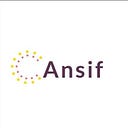C++ is a versatile and widely used programming language that is employed in various technical domains and application areas. Here are some of the tech areas where C++ is commonly used:
- Systems Programming:
C++ is often used to build operating systems, device drivers, and other system-level software due to its efficiency, control over hardware, and low-level capabilities.
#include <iostream>
int main() {
std::cout << "Hello, C++ System Programming!" << std::endl;
return 0;
}2. Game Development:
Many video games and game engines, such as Unreal Engine and Unity, are developed using C++. C++ provides the performance needed for real-time 3D rendering and simulations.
Links are here, https://unity.com/, https://www.unrealengine.com/
3. Embedded Systems:
C++ is used in embedded systems for its efficiency and ability to interface with hardware. It’s used in industries like automotive, aerospace, and IoT devices.
Here's a simple LED control example:
#include <iostream>
#include <wiringPi.h>
int main() {
if (wiringPiSetup() == -1) {
std::cerr << "Error initializing WiringPi." << std::endl;
return 1;
}
pinMode(0, OUTPUT);
digitalWrite(0, HIGH);
return 0;
}4. High-Performance Computing (HPC):
C++ is a choice for HPC applications, scientific simulations, and numerical analysis due to its speed and ability to utilize parallel processing with libraries like OpenMP.
A simple example using the Boost library for parallel processing:
#include <iostream>
#include <boost/numeric/ublas/matrix.hpp>
int main() {
boost::numeric::ublas::matrix<double> A(3, 3);
A(0, 0) = 1.0;
A(1, 1) = 2.0;
A(2, 2) = 3.0;
std::cout << "Matrix A:\n" << A << std::endl;
return 0;
}5. Graphics and Multimedia:
Graphics libraries like OpenGL and multimedia frameworks such as FFmpeg use C++ for rendering and processing graphics, audio, and video.
A simple example of using C++ with the SFML (Simple and Fast Multimedia Library) for rendering a window and drawing a shape:
#include <SFML/Graphics.hpp>
int main() {
sf::RenderWindow window(sf::VideoMode(800, 600), "SFML Window");
sf::CircleShape shape(50);
shape.setFillColor(sf::Color::Green);
while (window.isOpen()) {
sf::Event event;
while (window.pollEvent(event)) {
if (event.type == sf::Event::Closed)
window.close();
}
window.clear();
window.draw(shape);
window.display();
}
return 0;
}6. Networking:
C++ is used for network programming, often in conjunction with libraries like Boost.Asio, to create efficient and high-performance networked applications.
Boost.Asio is a popular library for building networked applications.
#include <iostream>
#include <boost/asio.hpp>
int main() {
boost::asio::io_service io_service;
boost::asio::ip::tcp::resolver resolver(io_service);
boost::asio::ip::tcp::resolver::query query("www.example.com", "http");
boost::asio::ip::tcp::resolver::iterator endpoint_iterator = resolver.resolve(query);
// More networking code can be added here.
return 0;
}7. Databases:
C++ is used to build and optimize database management systems (DBMS) like MySQL and PostgreSQL, as well as NoSQL databases.
#include <iostream>
#include <sqlite3.h>
int main() {
sqlite3* db;
int rc = sqlite3_open("mydatabase.db", &db);
if (rc) {
std::cerr << "Can't open database: " << sqlite3_errmsg(db) << std::endl;
return(0);
} else {
std::cout << "Database opened successfully." << std::endl;
}
sqlite3_close(db);
return 0;
}8. Financial Software:
C++ is used for developing high-frequency trading systems, risk management software, and financial modeling due to its speed and precision.
9. Scientific Computing:
C++ is employed for numerical simulations and data analysis in scientific research, especially in fields like physics, chemistry, and engineering.
10. Machine Learning and AI:
While Python is often preferred for AI and ML development, C++ is used in certain AI libraries, like TensorFlow and Caffe, for performance-critical components.
Here's a simple example using TensorFlow's C++ API to load and evaluate a pre-trained model:
#include <iostream>
#include "tensorflow/core/public/session.h"
int main() {
tensorflow::Session* session;
// Load a pre-trained model
tensorflow::SessionOptions options;
tensorflow::Status status = tensorflow::NewSession(options, &session);
if (!status.ok()) {
std::cerr << "Error creating session: " << status.ToString() << std::endl;
return 1;
}
// Load and evaluate the model
// More TensorFlow code can be added here.
return 0;
}11. Automation and Control Systems:
In industrial automation, robotics, and control systems, C++ is used to program controllers and interfaces.
12. Telecommunications:
Telecommunication equipment and systems are often programmed using C++ to meet performance and real-time requirements.
13. Audio Processing:
Audio processing applications, such as digital audio workstations (DAWs) and music software, use C++ for real-time processing and effects.
14. Scientific Instruments:
C++ is used to develop software for scientific instruments, such as electron microscopes, spectrometers, and medical devices.
15. Astronomy and Space Exploration:
Software for telescope control, space missions, and space research often involves C++ for its efficiency.
16. Simulators:
C++ is used to create simulators for training, education, and research across various domains, including aviation and healthcare.
17. Cybersecurity:
Security tools and firewalls are built using C++ to ensure speed and low-level control over system resources.
18. Web Browsers:
Web browsers like Mozilla Firefox make use of C++ for the core engine and rendering components.
19. Blockchain and Cryptocurrency:
Many blockchain platforms and cryptocurrency software use C++ for its performance, efficiency, and low-level capabilities.
C++ is known for its performance, control, and ability to work at various levels of abstraction, which makes it a versatile choice for numerous technical domains. Its applications span from low-level systems programming to high-level application development.
